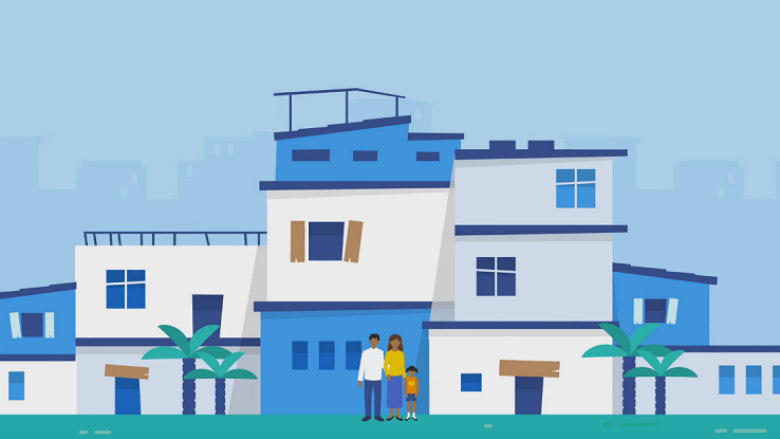With the Paris climate agreement in full force, Cities – responsible for two-thirds of the world’s greenhouse gas emissions and 70 percent of energy consumption – are on the front lines.
“We saw city leaders take center stage at both COP21 and COP22,” said Ede Ijjasz-Vasquez, senior director for the World Bank’s Social, Urban, Rural and Resilience Global Practice. “In Marrakech, the focus was on how to implement the Paris agreement, and bring national and local governments together to tackle what is likely the most enormous challenge in our lifetime.”
and creating a transparent system to monitor how well each country is performing.
“No country will be able to reach its climate goals without significant help from its cities,” said Steve Hammer, climate specialist for the World Bank. “Cities are the most important factor in the climate equation, and need additional tools and support to put them on a sustainable, resilient, low-carbon path.”
At COP 22, the Bank highlighted three of its newest tools to help cities meet climate challenges.
Identifying obstacles and encouraging investment
Unless there is significant investment to make cities more resilient, natural disasters may cost cities worldwide $314 billion a year and climate change may push up to 77 million more urban residents into poverty. In a new report, Investing in Urban Resilience, the World Bank and the Global Facility for Disaster Reduction and Recovery (GFDRR) note that more than 60 percent of areas expected to be urban have yet to be built. The report points to a number of major hurdles facing municipal governments and recommends steps to increase investment in resilience, such as implementing and enforcing modern building codes and creating a pipeline of investor-ready projects. It also lays out action the World Bank is taking to help cities promote urban resilience investment:
- Pre-development grant financing and technical assistance for project preparation;
- Advisory services to conceptualize, structure and finance investor-ready projects;
- Analysis to include hazard and risk considerations in project design and delivery; and,
- Technical Assistance to improve cities’ investment climate, regulatory environment, and city creditworthiness.
City specific, data-driven planning
During Climate Week and at COP 22, the World Bank demonstrated a new tool designed to help cities estimate the cost, feasibility, and impact of a wide range of climate actions under different scenarios. Developed by the Bank along with C40 Cities and the Compact of Mayors, and other partners, CURB: Climate Action Tool for Urban Sustainability, gives cities the information necessary to make climate-smart investments, relying on city-specific data. Using CURB, city officials can:
- Explore an array of climate-smart options, from more efficient transport systems to retrofitted buildings;
- Define what goals are realistic;
- Simulate technology and policy changes to assess the best course of action; and
- Analyze project financials to determine cost savings and returns on investment.
In Buenos Aries, CURB helped advance the city’s climate action plan with high-quality data and scenario simulations.
“CURB’s user-friendly graphics, financial projections, and other features can help city planners enhance communication and improve coordination within city government,” said Ines Lockhart, sustainability advisor to the city government. “The tool is perfect in helping the city analyze new potential actions in a more time-efficient way.”
If a city is missing data or other information, CURB can use data from similar cities or countries to plan targeted approaches. As a result, all cities can access CURB’s capabilities, regardless of size or income level.
Strong, resilient cities
Cities depend on a complex network of infrastructure, institutions and information; systems which need to work together to improve resilience to natural and socio-economic shocks and stresses which are exacerbated by climate change. With this in mind, the Bank’s CityStrength diagnostic tool evaluates the resilience of a city holistically, identifying the main risks across priority sectors such as urban development, infrastructure, disaster risk management, and social protection. Developed by the World Bank and GFDRR, the CityStrength Diagnostic helps cities:
- Identify and prioritize investment and actions for increased resilience
- Engage with multiple stakeholders, including local and national government officials, civil society and the private sector, leading to awareness raising and increased coordination on urban resilience.
- Encourage learning and provide access to best practices
The tool has been implemented in Can Tho, Vietnam; in Addis Ababa and ten regional capitals in Ethiopia; and across 16 municipalities in the Greater Accra Area in Ghana. As a result, a World Bank project is implementing the recommendations in Can Tho, the government of Addis is incorporating resilience-building components in an urban transport project, and a new urban resilience project is under preparation in Accra; helping these cities reach the goals set out in the Paris Climate Agreement.


